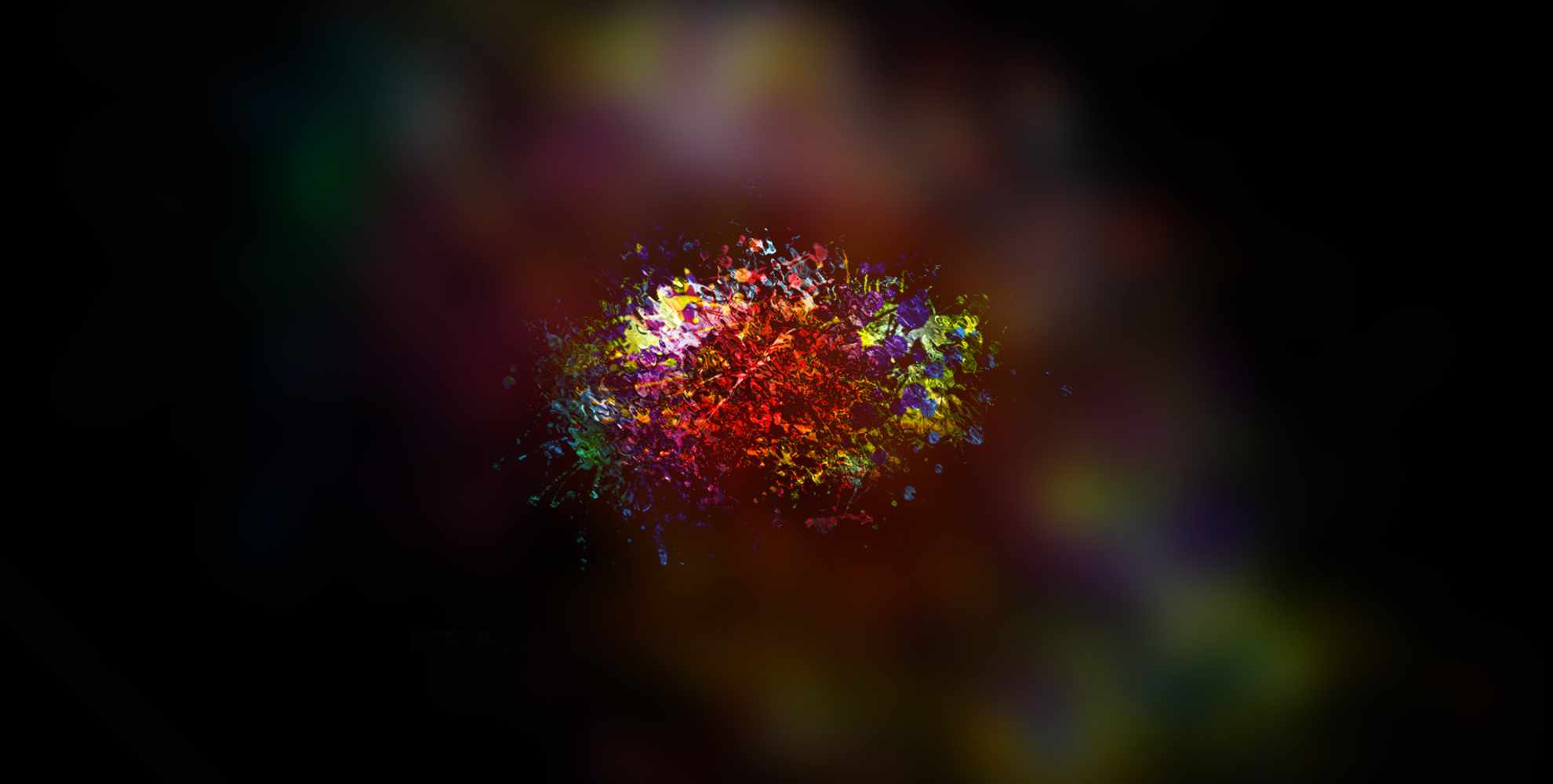Color carries specific meanings both in marketing and, more specifically, online. In fact, it could be the difference between a user converting and not converting.
Although color influence is a widely researched and published topic, very few studies focus on this in the context of user experience. By understanding how color can affect users’ perception of the value of an item or service or the trust placed within that item or service, we can persuade our users more effectively.
“Color influences both human behaviour and human psychology. Even though differences remain, there are values that transcend national frontiers”
– Thomas Madden, Kelly Hewitt and Martin Roth, Marketing [1]
Take Google for example. Google tested upwards of 40 different shades of blue on users for their search results to see which one persuaded users the most to click through? [10] Whether this is a reflection on value, trust or otherwise is unknown without seeing the exact results and analysis, but demonstrates that leading companies in this field are testing color and its effect on its users.
How color affects your users’ perception of value
“Color sells…and the right colors sell better”
Color Marketing Group [2]
Did you know that in the UK the use of pink in products tends to be perceived as average-priced? Or that, adversely, neutral colors are perceived as expensive? [3] Color can affect a user’s perception on the value of a product. We deem ‘value’ as the perceived return in the exchange of money. With this, therefore, if we buy a £150 shirt online we may believe this to be better value than buying a £25 shirt because of durability, quality and even the confidence factor. Alternatively, we may assume the £25 shirt to be of better value because it’s cheaper and we may not wear it enough to warrant the spend. Value is the worth of all these benefits arising from owning that product.
Color can affect this perception. Take cheaper products. Bright primary colors are often used to give the connotation of being cheap. Do you think there’s a reason why Burger King, KFC and McDonalds all use a similar color palette?


I remember reading somewhere that Orange was meant to be a very aggressive color, but the way EasyJet’s website plays on their brand color of orange gives a perception of being cheap, does it not? They want you to feel like you can afford to fly away more often. This color gives it a positive feeling of abundance to me.
We can continue this trend – let us use the high street stores of ‘Wilkinson’ and ‘Home Bargains’ – both sell very low value items for the home and both color palettes are, interestingly, red. Vodafone aside…
In this sense, not only can color affect our perception of value, but it can actually increase sales when used correctly. There are even such consultants known as ‘colorists’ – people whose job it is to determine color schemes on products and its use online, of whom, the top freelance consultants can command a five-figure salary … per day. I’m in the wrong job.
Taking a look at the other end of the scale; darker colors give a different sense of value. They can give perceptions of “elegance, sophistication, power,” [5] so if we take a trawl through some of the more high-end websites of Patek Phillipe, Cartier, Prada, Versace and Pagani we find nothing but dark colors. Why? Well “Black can also be seen as a luxurious color.
The Lamborghini website gives a true sense of luxury with it’s dark hues. Black, when used correctly can communicate glamour, sophistication, exclusivity,” according to Karen Haller, a Color And Design Consultancy firm [6]. As a result, this specific color is giving an immediate perception of value without even the product in sight.
The perception of trust within a color
We’re aware how influential trust is on conversion rates; it’s been well researched and widely documented (Torkzadeh and Dhillon, 2002) [7]. The influences, of which, are many however the relationship of color and its impact on users perception of trust is not one that is “fully understood”[7]. Does color affect trust? Does color persuade us and provide us with more confidence in our use of a website? In turn, does it have a direct influence on conversion rates and therefore sales?
Because of its lack of understanding, that’s exactly what Padadopoulou and E Palet’s [7] sought to achieve in 2010. Their qualitative study on understanding the relationship between color and trust saw them interview several users based on their past visits to ecommerce websites. Of the 21 interviews, color was specifically mentioned 79 times. The results demonstrated that color does have a direct relationship on the users perception of trusting that website. The ways, they continue, in which color influences a user perception of trust is through:
- Preference
- Benevolence
- Competence
- Integrity
- Predictability
Ultimately, when push came to shove, “a colored commerce web site will be trusted and preferred over one which is dull and colorless” although “the use of colors should be prudent”.
The overall responses indicated that color and trust were inextricably linked through various different means. For example, colors that offered a warm and friendly ambience were more trusted. Also, through good use of color, a website would give a clear understanding of the user with their best interests at heart, not promotion. In this, the navigation and content hierarchy was perceived as being more usable and thereby improving the confidence of the site and, ultimately, trust. [7]
Let’s take this principle and look at something as subdued as the recently acclaimed Gov.uk. It’s a clean site that introduces hues of blue with the intention of a calming, trustworthy and reassuring perception. The purpose, behind which, is to give useful information that the user trusts. Similar to a financial institution, you wouldn’t exactly see Barclays bank using bright highly saturated colors like Red and Yellow? It’s to insinuate trust.
It must be noted that colors can influence a users trust perceptions in both a positive and negative way. Padadopoulou and Palet (2010) continue by stating that “the use of vivid, high saturated colors is generally seen as promotional and aggressive when applied to ecommerce sites. This lowers the perceived trustworthiness of the online vendor” [7]. Perhaps then Miniclip.com’s heavy use of Orange and Blue wouldn’t be used in an ecommerce setting when you’re trying to trust users in parting with their money?
This isn’t just an overall color palette, either, there have been individual AB tests to identify whether the color of a button can influence a user committing to a purchase or sign up. Take Hubspot’s identification of what converts best – a green button or a red button [8]. Hypothesis dictates that green, a more trustworthy indication meaning ‘to continue’ and with connotations of nature would be the preferred version? No. Red, meaning ‘warning’ with connotations of blood, increased conversions by 21%. This does not necessarily mean we should blindly change all buttons or that this negates the research of Padadopoulou and Palet (2010), but does show that color can influence users trust with the vendor but this is within the context of the environment.
So what colors are best? Natalie Nahai, author of ‘Webs of Influence: The psychology of online persuasion’ discusses this very topic by suggesting that “ecommerce sites that use a subdued color palette effectively provide their customers with a soothing relaxed environment in which to interact comfortably.” [3] This, she continues, increases the level of trust that a user has for that site. However, as proven with Hubspot’s AB test, this is contextual and should always be tested.
Overall Thoughts
Color perception is a complex process. Really complex. We can say with some confidence that color does have an impact on both the users perception of value and of trust in both positive and negative connotations.
Color has a direct influence on value; selecting the right color can give an immediate indication on whether a user believes that it is a high-end, expensive product or a low-valued item. If you look at the bright reds and yellows of McDonalds, for example, they influence your opinion on it’s worth.
Similarly, color can dictate the entire usability of the site and the confidence that a user has with that site.
Ultimately, it’s certainly not the only factor in either scenario and would always recommend it is tested where possible.
Further Reading
- [1] T. J. Madden, K. Hewitt and M. S. Roth (2000)
- [2] Color Marketing Group, cited in J. Lambert (2004) ‘Color schemers’, Canadian Business, 77 (18): 76-82
- [3] Nahai, N (2012) ‘Webs of Influence: The psychology of online persuasion’, Pearson, (1)
- [4] L Randall (1991) ‘Does Orange mean cheap?’, Forbes, 23 December, 144-7.
- [5] http://www.lifescript.com/well-being/articles/t/the_secret_influence_of_color.aspx, accessed 24th January 2015, 17.14
- [6] http://www.businessinsider.com/branding-and-the-psychology-of-color-2012-12 accessed 24th January 2015, 18.19
- [7] J.E Palet and P.Padadopoulou (2010) ‘The effect of e-commerce websites’ colors on consumer trust’, International Journal of E-Business Research, 7 (3): 183-95
- [8] http://blog.hubspot.com/blog/tabid/6307/bid/20566/The-Button-Color-A-B-Test-Red-Beats-Green.aspx accessed 24th January 2015, 22.34
- [9] http://karenhaller.co.uk/blog/branding-why-red-yellow-is-used-by-the-fast-food-industry/ accessed 2nd February 2015, 10.30
- [10] http://www.theguardian.com/technology/2012/jul/16/marissa-mayer-appointment-mean-yahoo?newsfeed=true accessed 2nd February 2015, 10.37








